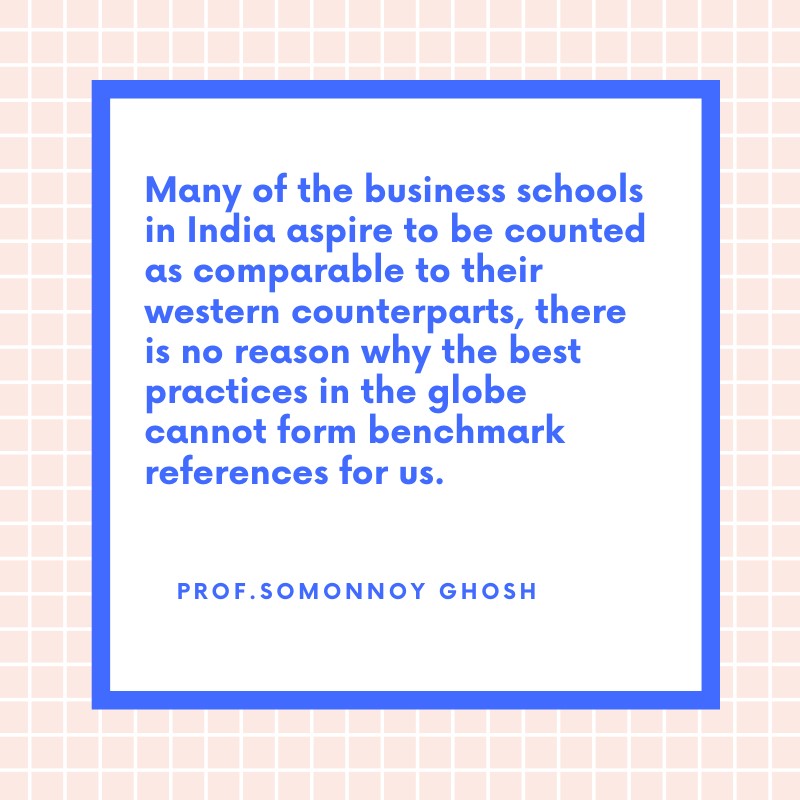
Implementing Emerging Technologies in Course Delivery
The last decade has seen a marked increase in the use of technology in the process of teaching and learning, be it the use of learning management systems (LMS) as an online platform for class interactions or dissemination of materials, or the use of digital media inside the classroom or as an online omnipresent learning companion, or the proliferation of massive open online courses (MOOC). Needless to say, these are only some of the ways in which technology is shaping the learning experience of learners all over the world.
What is growth of Technology-facilitated content Delivery?
In a global survey of 65 business schools from 31 countries across the world, conducted by CEEMAN, it was found that over 67 percent of them uses technology-facilitated content delivery, either fully or partially, in some of their courses in their programmes. Since this report is dated 2014, it is reasonable to expect this share to have gone further up by now. Lest we rush to conclude that the sample of the survey came from schools in resource-abundant nations, it would be interesting to note that it comprised of nations from Asia, Africa, and East Europe, besides the rest of Europe and the USA. In any case, since many of the business schools in India aspire to be counted as comparable to their western counterparts, there is no reason why the best practices in the globe cannot form benchmark references for us.
At BIMTECH, where I teach, we have been fortunate to have been able to inculcate a favourable disposition of teachers and learners toward using technology in multiple areas of the teaching-learning process. Consider assessment, for example. We have an internal testing engine that randomly picks a chosen number of multiple choice questions from a pre-created database to administer a test that is automatically timed as well. Since the database normally has a large number of items, this implies that students sitting next to each other get questions substantially different than the neighbour’s in a random sequence. At the same time, since the items are standardized in terms of their level of difficulty, it also ensures parity.

How does BIMTECH Faculty use technology relevant Teaching process?
For many years now, BIMTECH experienced Faculty have been using MOODLE as an online LMS platform. Not only does it allow them to place all relevant teaching materials to be directly accessed by the learners 24×7, it also enables creation and placement of assignments, polls, notices, and discussions, in addition to digitally recording the class attendance. Anything that is made ‘live’ on MOODLE is immediately accessible to all the registered learners on a real time basis. This has immensely reduced the use of paper and helped create online class communities.
Most of our classrooms are equipped with digital screens that are touch-enabled. What this means is that it has became very convenient for instructors (and students making presentations) to use multiple media files and applications simultaneously on the screen itself; switching between files and applications does not require the presenter to use the keyboard. The screen can be used like any device. What’s more, it seamlessly integrates and interacts with web based classroom management applications like Acadly and Socrative, both of which are used at BIMTECH. Among other interesting uses, these allow the instructor to create student polls on the go; the results are instantly displayed on the screen. Such polls can serve as powerful learning strategies inside the classroom and can also be used to promote student collaborative learning.
How are BIMTECH students facilitated by Digital enhancement and Technology growth?
At a more personal level, I have experimented with blended learning at BIMTECH. All the sessions of a certain course were pre-recorded using a simple video camera. These were then uploaded on YouTube and made accessible to all the class participants. Initially, for the first third of the course, it was disappointing to see very little usage of the video sessions. By the end, however, 97 percent of the class had watched over 400 hours of the content.
The usage peaked close to the midterm and end term exams. Much after the course and the assessment was over, I took a survey of the participants with the aim to understand if my experiment had worked. To the question on the reasons for using the video lectures, each of the following three responses was opted by more than 50 percent of the respondents: a) ‘they helped me prepare for tests/exams’, b) ‘they helped me understand concepts and their applications’, and c) ‘they helped me revise what the instructor had covered in class’. On the question of the utility, 88 percent of the respondents found the sessions ‘very useful’.
Technology has been popularly and rightly termed as an enabler. Our endeavors at BIMTECH to use it for enriching the learning experience of participants have seen reasonable success for us to feel encouraged. It also serves the goal of equity and reach without barriers. It is heartening to see my videos on YouTube being watched and commented upon by learners not only from different parts of India, but also from foreign lands.

Prof. Somonnoy Ghosh
Associate Professor-BIMTECH
